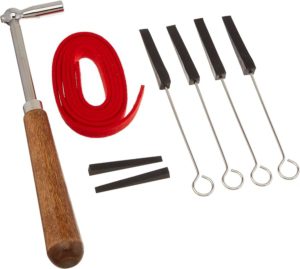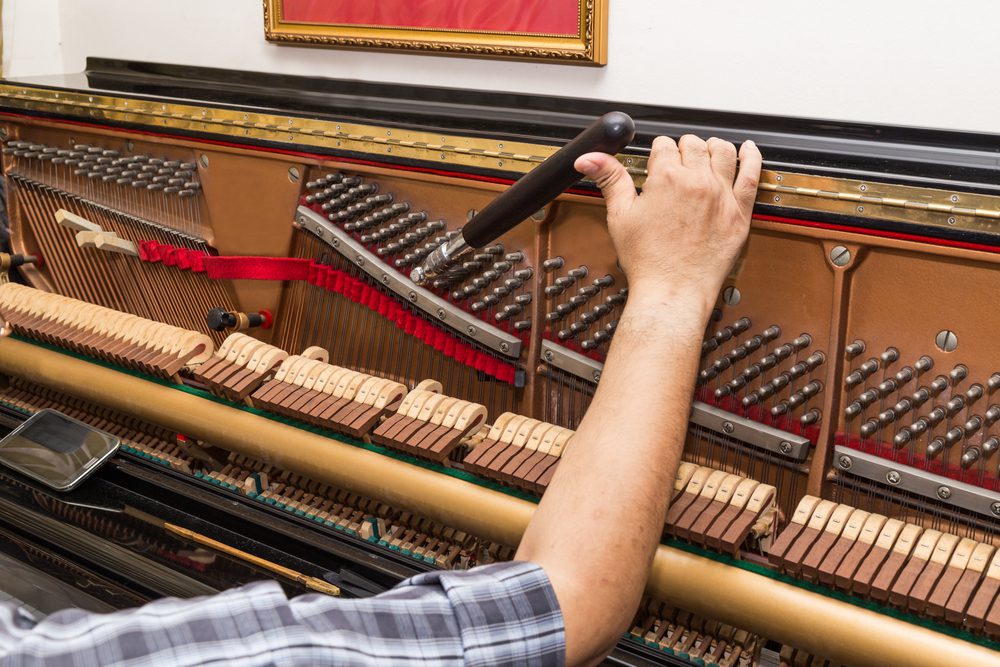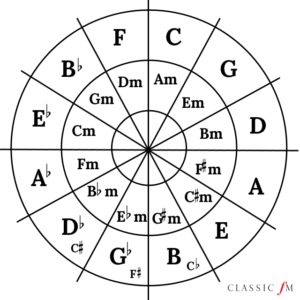A Beginners Guide To Properly Tuning A Piano
What you’ll need:
- A Tuning “hammer” (or tuning Lever). This must be of high quality. Small cheap ones have no leverage and won’t work properly. I once heard a tuning guru once say, “proper tuning starts with a quality lever”.
- A strip of felt known as a “mute strip”
- Download a piano tuning App. I recommend “Pano Tuner” for free from GOOGLE STORE or APPLE MARKET. It’s what most folks use.
- I recommend buying a simple Piano Tuning Kit on Amazon for $20-$30 to start.

Make sure to tune one string at a time. In order to do this, you must place the red felt “mute strip” between the other strings to dampen any sympathetic vibrations like so:

Let’s start with the basics. It greatly helps to already know how basic string tuning works (on a guitar for example).
The basic principal is the when you tighten a string by tightening the lug, peg or post, the string tightens and therefore raises the pitch (the note goes higher).
For piano, tightening the tuning hammer clockwise will raise the pitch and turning the hammer left, or counterclockwise, will lower the pitch. This is the same with every other stringed instruments out there, from guitar to violin to banjo. Tightening a string linearly always raises the pitch, as it becomes more taught (tighter).
A couple notes before you start:
* Tune outside strings first and center one last
* Remove muting felt before tuning
Let’s begin:
1. Reference A (440) on a tuner, app or fork
2. Start 1st interval – go up a 4th to D and listen for interference of harmonic between them
3. Find A Harmonic: (A220) then octave up (A440), then the 5th up (E660), Maj3rd (C#1100), Minor 3rd (E1320)
4. Find D Harmonics (a 4th above A): D293.6. D587.3 A881 D1174.6 F#1468.3
5. Hold D and A down (open and silent) and strike the next A up.
6. Listen for Beat Rate (Swells produced by interference of similar tones)
7. Go through circle of fifths and tune in that order.
8. After you’ve tunes this single octave, tune the rest of the piano, high and low.





